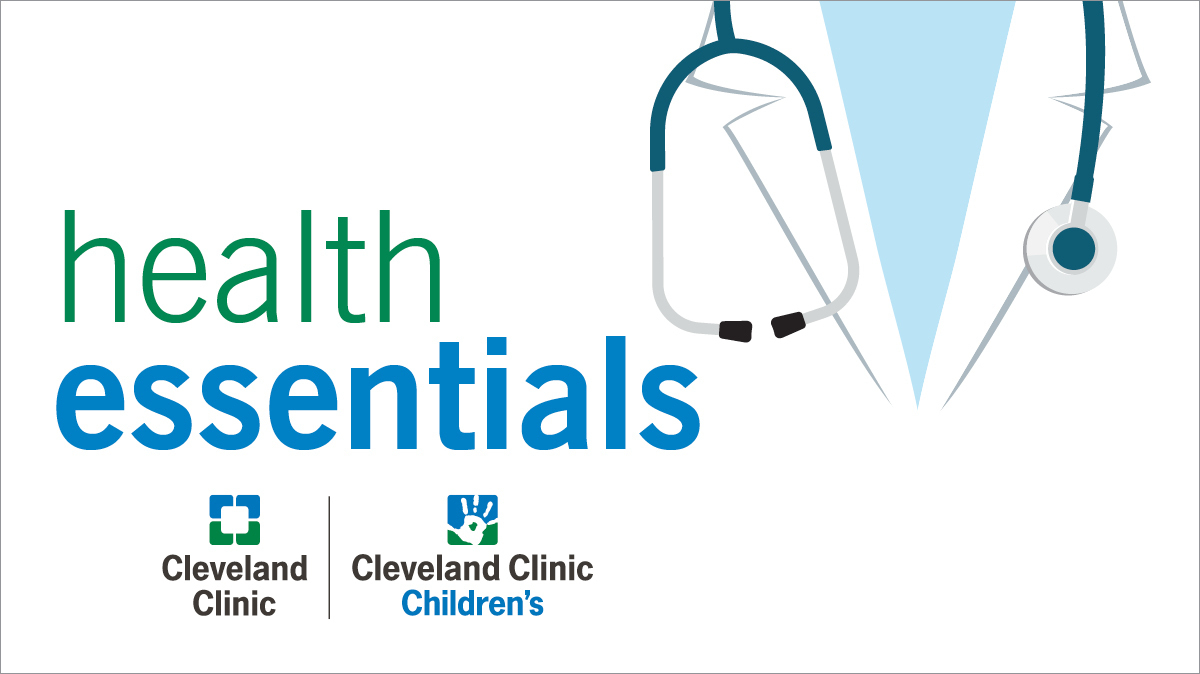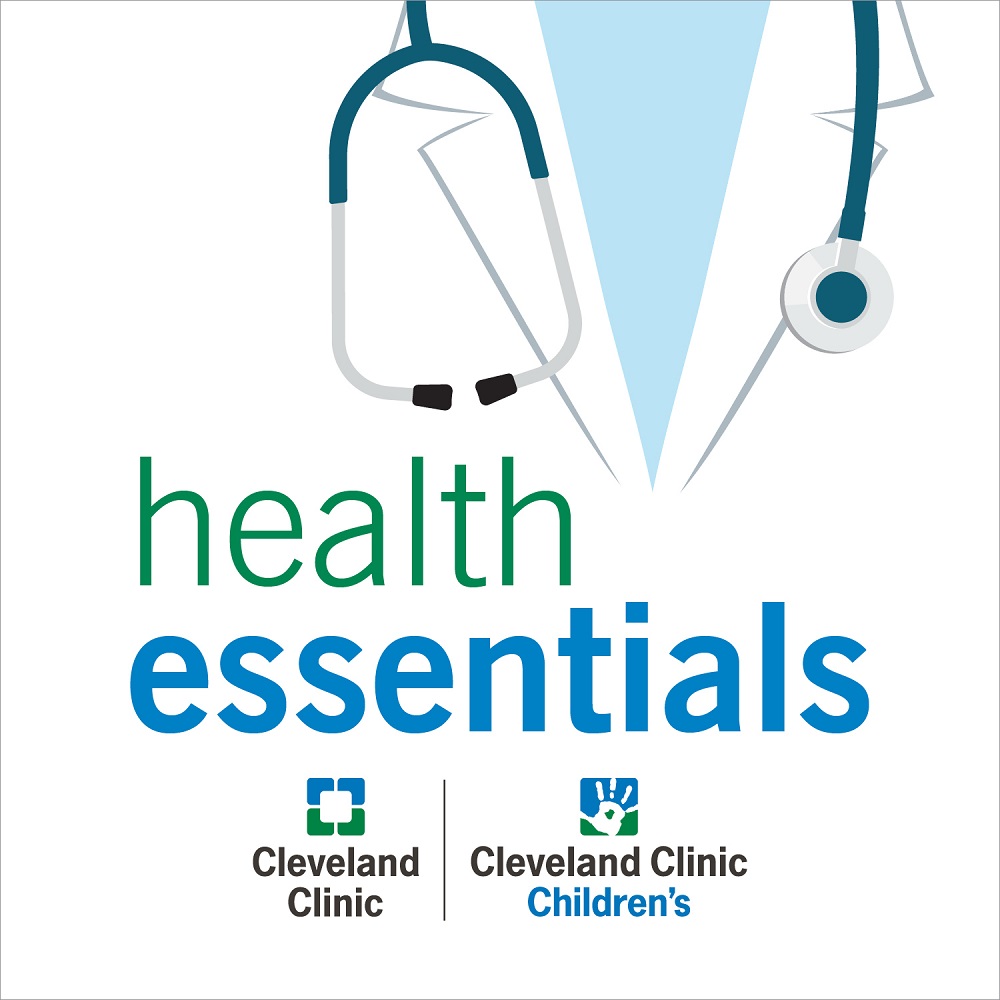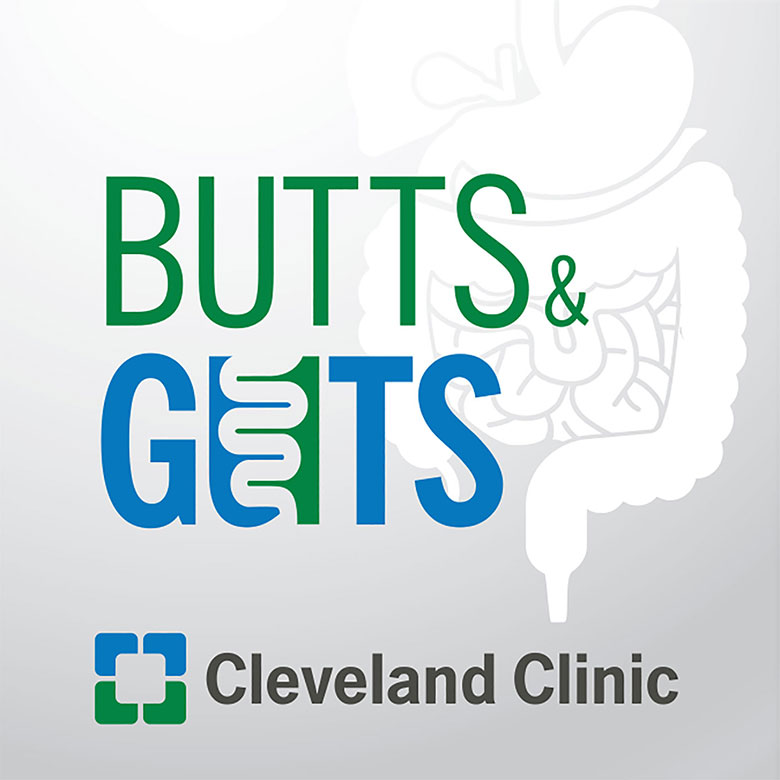The Dangers of Lead Poisoning: How to Protect Your Family with Dr. Roopa Thakur

Subscribe: Apple Podcasts | Podcast Addict | Spotify | Buzzsprout
The Dangers of Lead Poisoning: How to Protect Your Family with Dr. Roopa Thakur
Podcast Transcript
Speaker 1:
There's so much health advice out there. Lots of different voices and opinions, but who can you trust? Trust the experts, the world's brightest medical minds, our very own Cleveland Clinic experts. We ask them tough, intimate health question so you get the answers you need. This is the Health Essentials Podcast brought to you by Cleveland Clinic and Cleveland Clinic Children's. This podcast is for informational purposes only and is not intended to replace the advice of your own physician.
Molly Shroades:
Hi, and thanks for joining us for this episode of the Health Essentials Podcast. My name is Molly Shroades, and I'll be your host. Lead poisoning might be something you know about, but it's not front of mind. You might think of it as something in the past, unfortunately it's dangerous and can cause lifelong health issues. Today, we're joined by pediatrician Roopa Thakur to talk about what lead poisoning is, how it can impact the body and ways to protect our kids from it. Thank you so much for joining us today.
Roopa Thakur, MD:
Thank you for having me.
Molly Shroades:
So let's start right out by talking about what exactly lead poisoning is?
Roopa Thakur, MD:
Yeah, so lead is a malleable, corrosive-resistant metal that appears in multiple forms. Lead +2 is the type that our bodies can absorb. Usually either by ingestion or inhalation. And once it gets into the body, lead is absorbed into our bloodstream from the lungs or the GI tract, and then gets deposited in organs like the brain, liver, kidney, as well as bones, teeth, where it can accumulate over time.
Once it's deposited there, lead can interfere with the biochemical processes within those organ cells resulting in both the short and long term effects that we see with lead poisoning. And just a note it's actually very interesting that during pregnancy, bone can actually release lead into the bloodstream. And so there is a chance that female children who were lead poisoned as children can actually have lead poisoning or lead exposure to their fetus during pregnancy.
Molly Shroades:
Now, one thing that I was wondering as you were talking a little bit and mentioned pregnant women, if you’re trying to get pregnant or are newly pregnant and you think, I know I have a possible risk in my home, or I live in a very old environment, should you bring that up to your Ob/Gyn or caregivers at the beginning of a pregnancy to let them know about that risk?
Roopa Thakur, MD:
Absolutely. And then they can talk to you about when and how they would like to test. Yeah.
Molly Shroades:
So let's talk a little bit about how much lead is toxic and kind of absorption here.
Roopa Thakur, MD:
So ultimately we know that there's no safe lead level. Any exposure can be detrimental to children and this is why primary prevention is so important. The definition of primary prevention is intervening before health effects occur. So in the case of lead poisoning, primary prevention means removing lead hazards from the environment before a child is actually exposed to them.
Molly Shroades:
Absolutely. Now, I know that in the past lead was used a lot more than it is today in household products and things that we would've interacted with. Let's talk a little bit about the history of lead.
Roopa Thakur, MD:
Sure. So this is actually really interesting. Lead production actually began in ancient Rome and Greece. It was initially found as a compound during silver mining, a contaminant with the silver mining. And so that lead contaminant was removed and used for plumbing and dishware and other purposes. And looking back, scientists have been able to quantify the lead content found in bone samples. And what they found suggests that lead really wasn't in the environment until humans started digging it up and exposing the biosphere to it. So lead poisoning really started at that time.
We discovered that lead paint was dangerous to children at the end of the 19th century, beginning of the 20th century. And at that time it was banned in much of Europe and Australia. In 1921, the National Lead Company in the U.S. acknowledged that lead is a poison. And in 1922, the League of Nations passed a treaty to ban lead paint, but the U.S. declined to adopt the policy at that time. So over the next 50 years, data was collected, demonstrating that lead is toxic. There are ill effects of poisoning until finally in 1978 lead-based house paint was banned in the U.S.
Aside from paint, another main way that lead levels became elevated was because of lead in gasoline, which spread rampantly and the National Health Assessment Nutrition Examination Survey, which is conducted by the CDC demonstrated that correlation pretty nicely. So now that we've kind of eliminated leaded gas, we've seen some improvement there as well. But today lead can still be found in leaded crystal storage batteries, soldering, it's used as a plastic stabilizer or insulation coating on electronics. So it still is definitely used in industries today.
Molly Shroades:
Interesting. Yeah. I feel like a lot of people hear about it when they're buying a home and they say, "If it's over this age, we need to check for lead samples and things like that." It's kind of, you don't always think about that link to the past until you come right on to it?
Roopa Thakur, MD:
Mm-hmm (affirmative).
Molly Shroades:
When you're thinking about lead exposure, I think people might automatically jump to just paint or even like antique toys and things. Well you talked about this already, but let's touch on a few other ways that people could be exposed to lead.
Roopa Thakur, MD:
OK. So the most common source of lead is lead-based paint and two thirds of Ohio's housings stock was built during that lead paint era. So that's most of our inner city, as well as rural housing stock in the state. And the highest amount of lead we know is found in homes built prior to 1950 and is found in the lead-contaminated dust from deteriorating paint that coated doors, windows trim, porches, all the areas that we typically are repainting now anyways. When we look at lead-based painted homes, it's of course not just the age of the house, but also the condition of housing and the neighborhood maintenance that factors into the degree of lead exposure. So if it's an older home that's been regularly repainted and wet mopped the exposure risk will be much lower than a home built in the same year, but with chipping paint and dust accumulation in areas where children play.
So 80% of Ohio's lead exposure does come from lead-based paint, but 20% can come from one or a combination of other sources. So the next thing people often think about is water. So water contamination can reflect either a failure of corrosion control, or it could be low level constant leaching from lead pipes over time. And because we're drinking water so much and using it in our cooking and using it to mix formula for babies, you multiply that small amount of water that we're using by the large amount of water that we take in and you can see that the total exposure then can be quite large. But when we think about water contamination, it's important to note that municipal water lines or service lines are typically safe. They're not made of lead. It's the lines from the service lines to the home that were made of lead. And theses lead pipes were banned in 1986.
Although some cities or counties may have banned them even earlier. And lead plumbing and fixtures were allowed until 2014. So really looking at the home itself is most important there. There are lots of other sources of lead. So lead contamination can occur through occupational exposure. High risk occupations include construction, renovation, those who work with lead batteries or lead recycling, welders, plumbers, firing ranges. Lead can also be present in our soil, especially around homes that may have had lead paint, but also just in zip codes where there were industries that used a lot of lead in the past. We can find it in imported spices, herbs and foods. Toys may have been painted with lead paint. There are a number of traditional cosmetics, medicines or ceremonial powders that can contain lead either as a main ingredient or as a contaminant. So ultimately it all adds up. Lead exposure from a combination of these sources can result in a child's elevated lead level.
Molly Shroades:
Interesting. I don't think many of us think of it in so many places or having impacted our lives in so many ways. Now, I am wondering what about like antiques, if you have a lot of antiques in your house, should you be kind of leery about that?
Roopa Thakur, MD:
In general, I would be. And there are actually places where you can get such items tested. So for specific items of concern, you can have them tested by calling the Ohio Department of Health's Lead Licensure and Accreditation Program. Other states probably have a similar program and they can kind of walk you through when is the item from, what the risk might be? And if they do recommend testing, they can kind of guide you through that process of where to send either the item or a sample from it.
Molly Shroades:
Interesting. That's good to know. Awesome. So let's move on for a minute to signs and symptoms here. So I imagine there are some obvious signs, but maybe there are some that aren't so obvious. Can we talk a little bit about things to watch out for, particularly in children for lead poisoning signs?
Roopa Thakur, MD:
Sure. So the vast majority of cases of lead poisoning are actually asymptomatic. So that means that the child does not show any signs of acute lead toxicity. So this is actually why we screen based on risk factors rather than symptoms alone. So if a patient does have symptoms, they are very vague. They may include irritability, behavior problems, abdominal pain, lethargy, loss of appetite, headaches, memory loss and if lead levels are very high, you may even see seizures and neurologic problems. So like you said, for those who may not have lead on their brain like I do all the time, these are very vague and may not necessarily prompt someone to think of lead poisoning. So it's important to talk to your provider if you're worried.
Molly Shroades:
What kinds of things would come up in a typical screening when you're mentioning that, what kinds of questions might a provider ask about that?
Roopa Thakur, MD:
Sure. So we at the Cleveland Clinic use the Ohio Department of Health questionnaire, and that asks about the zip code that the child lives in, because we know that the majority of zip codes in Ohio are high risk for lead meaning again, that the soil around homes is contaminated. Medicaid eligible folks are all required to get testing at 12 and 24 months. And then we ask about the age of the home, the condition of the home, also day cares or any other facilities or homes, grandma's house that the child maybe spending time at. We ask about occupational exposures of anybody who is in the household, those types of things.
Molly Shroades:
Interesting. Awesome. Now I know that there is... I want to talk for a moment about little kids, very young ones here. And kind of the concerns and dangers for them involving lead.
Roopa Thakur, MD:
So there are actually lots of reasons that kids are at higher risk for environmental hazards in general, but lead definitely being high on that list. And this is just because of their physiology. So we know that their GI tract absorbs four to five times as much ingested lead as an adult with the same exposure. And some of this may be related to their diet. They have somewhat limited diets that can predispose them to iron-deficiency anemia, and that iron deficiency we know can increase lead absorption. So there is a link there. Thankfully we screen for iron deficiency at 12 months along with the lead screening, so hopefully we would catch that at the same time. But we also know that the most rapid increases in blood lead levels occur between the ages of 6 and 24 months. And this is because infants and toddlers are becoming very mobile. They're spending most of their day playing on the floor where lead contaminated dust or chipped paint will tend to be.
And developmentally these children are exploring the world by putting everything in their mouth. So they do a lot of crawling, playing with toys and then immediately putting their hands in their mouth. And so they can actually ingest quite a large amount of lead from that behavior. This age range though, also coincides with the period of most rapid brain growth, which is why there's this concern that acute lead poisoning under the age of 2 years may result in more significant neurologic or developmental effects.
Molly Shroades:
Oh, man I absolutely can picture everything in the mouth moment. Every toddler, it's just everything in there every time. So, I want to talk a little bit about the lifelong implications of lead poisoning. You know, if a child is exposed really early on, what are some of the issues that can come up over the long run?
Roopa Thakur, MD:
Sure. So lifelong consequences can include decreased bone and muscle growth, hearing loss, neurologic damage as I mentioned before, ADHD, developmental delays and decreased IQ. Those are some of the main ones we see, but there's a wide variety of different things that we might see.
Molly Shroades:
Now once with treatment, can these things go away or is this kind of something that's permanent?
Roopa Thakur, MD:
So unfortunately we can't reverse the effects of lead poisoning. So treatment in the form of a cure doesn't really exist. But we can provide interventions to optimize outcomes for those patients by screening for these conditions like developmental delays or bone health and things, hearing screens. And then we can offer therapies to promote development as well as counseling on healthy lifestyle to try to minimize those effects.
Molly Shroades:
Gotcha. Great. So, I think a lot of people really like having an action item, they want to know what can I do. So for parents, particularly if you have young children at home, what are some things that they can do to limit the dangers of lead poisoning and limit their kids' exposure?
Roopa Thakur, MD:
Sure. So as I mentioned before that hand-to-mouth behavior is developmentally normal and appropriate for infants and toddlers. So I wouldn't necessarily say that you have to stop them from doing that, but in a home with lead paint dust, a small child could easily pick up lead particles on their hands and immediately put those in their mouth. Older children as well with developmental delays that result in that persistent hand-to-mouth behavior or those with pica, so eating non-food items would also be at increased risk for lead exposure. So it's really helpful to wash hands frequently, especially before bedtime when kids might be sucking their thumbs. And especially before mealtime when they're probably picking up their food with their hands and putting it in their mouth.
Molly Shroades:
And I imagine there's quite the cleaning routine you can do as well, right?
Roopa Thakur, MD:
Absolutely. Yeah. I can go into those if you'd like. Yeah. So if a family has chipping paint already that they're aware of, they can temporarily cover those areas with tape to prevent flaking and further deterioration until they have a chance to address it more permanently. They can also use furniture or other physical barriers to try to block access to those areas that they know might contain lead paint. And if a home is actively undergoing repairs or renovation areas known to contain lead paint should be blocked off with the ceiling to floor tarp or other barrier to try to keep kids out of those spaces. In general though, a home where we're worried of about lead exposure, all surfaces should be wet mopped frequently to remove lead particles. Dry sweeping actually might kick up more of that dust and spread it around the home or make it easier for it to be inhaled. So it's a good idea to wet mop as frequently as you can. And periodically families can borrow a HEPA vacuum from their local health department to get a deeper clean.
Molly Shroades:
Is it possible to bring sources of lead into the home from the outside?
Roopa Thakur, MD:
So if there is a family that has occupational lead exposures and if they have access to facilities at work, we would ask them to change their clothes and shower before leaving work to prevent tracking those lead particles through their car and back home. If that isn't possible, then they should remove their clothes and shoes before entering the home, shower immediately when they reach home and wash their clothes separately from the rest of the family to prevent cross-contamination. We talk a lot about just general hygiene practices as well. So the frequent hand washing that I mentioned before, but we also know, as I mentioned, that soil contamination is very common around older homes and in neighborhoods with high risk industries. So it's important not to allow children to play in bare soil around those areas. And for that reason too, it can be helpful to remove shoes at the door so that you don't track all that lead contaminated soil through the house.
And then we also know that nutrition can affect lead absorption. So as I mentioned before, children who are iron deficient absorb lead more easily, so a diet high in iron or a multivitamin with iron can help. Vitamin C aids and iron absorptions, so some extra citrus or veggies can help. And then we know that dietary calcium can decrease GI absorption of lead. So low fat dairy products should be encouraged.
Molly Shroades:
Great. So it sounds like it's definitely something you want to keep front of mind and kind of keep these prevention strategies constantly at the forefront?
Roopa Thakur, MD:
Absolutely.
Molly Shroades:
Awesome. So let's talk a little bit about testing. I know earlier you mentioned about how you could test one specific piece, but let's talk a little bit about testing for your home and how often that should happen and also maybe a little bit about testing for family members.
Roopa Thakur, MD:
Sure. So I'll start with the last part, maybe, so testing for family members. If there is a sibling or, lead poisoning identified in the home, we do recommend that others in that home get tested as well, especially other children. And then there is a push actually to test pregnant women, as I mentioned before, because it can affect their fetus and so testing pregnant women may be helpful as well. But if there's a concern about lead exposure from paint, or if the source of lead is unknown in the home, there are two options for investigating the home. So they have lead inspections and then lead risk assessments. So a lead inspection involves testing all the painted surfaces of a home to determine if they contain lead-based paint. And then the homeowner would receive a report listing those surfaces so that they could address it, but it doesn't necessarily identify all lead-based paint hazards or suggest action items for them.
But that testing typically can be done either using X-ray fluorescence, which is essentially we using an X-ray to determine if there are lead-based paint or lead in the paint without damaging the painted surface, because we know that collecting lead paint chips can actually pick up lead dust and create an exposure. So we try to leave intact paint alone, but the other option would be if you do have paint chips or if you're unable to use the X-ray fluorescence you could collect those chips and send them to the lab for testing.
The other option, here is a risk assessment, which is a little bit different. So a risk assessment involves inspecting the condition of all the painted surfaces in the home, but it also takes into account the occupants use of those rooms. They would collect dust to be tested for lead. They would test for deteriorating paint. Again, either using x-ray fluorescence or collecting the paint chips. And then in their report, they actually indicate the location and severity of any lead hazards and suggest an action plan for families to take to try to mitigate those risks.
Molly Shroades:
Let's talk a little bit about your next step, if your child has an exposure. Let's kind of walk through those steps one by one, a little bit for parents, what do they do?
Roopa Thakur, MD:
Sure, sure. So, first of all, I think it's important to understand why we do blood testing. So we often don't know that a child has had lead exposure until after we test them. So, as I mentioned before, testing allows us to identify the children in which that primary prevention failed and they were exposed to lead either in the home or in another area in their life. And it gives us an opportunity to treat that affected child and address their environment to prevent further lead exposure with the goal of reducing their blood lead levels as quickly as we can. So the Ohio Department of Health requires lead testing for patients who are Medicaid eligible or living in a high risk zip code, or have ongoing exposure risks like we talked about before. The age of the home, the condition of the home, a sibling or playmate with a history of lead poisoning, family members occupational exposure, or the home's proximity to a high-risk industry known to generate that lead dust.
We can do that testing if they are positive on our questionnaire about those types of things. We can do that testing by either a capillary finger prick or a venous blood draw from the lab. Each have their pros and cons, but it's important to remember that if we do have a positive on that capillary finger prick, it needs to be confirmed by a venous blood draw. And this is because there's a chance for a false positive with the finger prick testing and the venous test may actually come back normal. So it's a little bit more accurate, but it's important that we don't dismiss those cases entirely, because what may be going on is that the child has lead residue on their fingers because it's there from places where they've been playing. But they haven't actually ingested it yet so we're not seeing it in their blood. So there may still be some action items that we could take to address lead in the child's environment.
And once we perform that test in our clinic, Ohio law mandates that lead levels be reported to the Ohio Department of Health. So levels greater than five are flagged prompting a call to the family from the Department of Health. An automatic referral to Help Me Grow for early intervention services is also generated and they will call the family to schedule an evaluation for developmental delays. If they do identify any delays, child can receive speech occupational and physical therapy through Help Me Grow itself. Levels greater than 10, right now should result in a home inspection performed by the local health department, which may initiate the abatement process. And levels over 45 might warrant chelation therapy, which is actually either an IV or a by-mouth medication that can help us to reduce the blood levels as rapidly as possible.
Molly Shroades:
Great. Now, is there follow up a lot over time kind of to track this and see how everybody's doing?
Roopa Thakur, MD:
Yes. There are actually pretty detailed guidelines for how frequently we should be retesting based on how high the lead level was. And then just kind of ongoing if we know that there was a lead poisoned child in this family, in this home, then we're much more vigilant with the younger kids and testing them a little bit earlier, a little bit more frequently. Yes.
Molly Shroades:
Wow, great. This is lots of really helpful information for parents out there. Now, as we wrap up today, I know this can be a very scary topic for a lot of people. Many would be hate to think that there's something that could harm your family within your home. Can you pass along a few words of wisdom to parents out there about lead poisoning?
Roopa Thakur, MD:
Yeah, so as I mentioned before, we know that there's no safe level of lead in the body and that can be very scary to think that even with a small amount of lead, you may have long lasting effects in your child. So it's really critical to understand all the common sources of lead in our environment in our homes and to learn all those preventive strategies to minimize our children's exposure. So a lot of these cleaning and home maintenance tips that we've talked about today can go a long way towards preventing lead exposure. There are also a lot of resources available for families if they are concerned to help navigate either the inspection process or the abatement process, and they can go to their local board of health website to find some of those.
Molly Shroades:
Awesome. Thank you. Thank you so much for joining us today and sharing your insights.
Roopa Thakur, MD:
Thank you for having me.
Molly Shroades:
To learn more visit clevelandclinic.org/leadpoisoning.
Speaker 1:
Thank you for listening to Health Essentials brought to you by Cleveland Clinic and Cleveland Clinic Children's. To make sure you never miss an episode, subscribe wherever you get your podcasts or visit clevelandclinic.org/hepodcast. You can also follow us on Facebook, Twitter, and Instagram for the latest health tips, news and information.

Health Essentials
Tune in for practical health advice from Cleveland Clinic experts. What's really the healthiest diet for you? How can you safely recover after a heart attack? Can you boost your immune system?
Cleveland Clinic is a nonprofit, multispecialty academic medical center that's recognized in the U.S. and throughout the world for its expertise and care. Our experts offer trusted advice on health, wellness and nutrition for the whole family.
Our podcasts are for informational purposes only and should not be relied upon as medical advice. They are not designed to replace a physician's medical assessment and medical judgment. Always consult first with your physician about anything related to your personal health.


